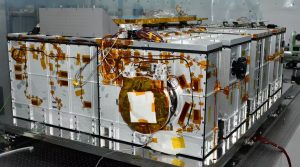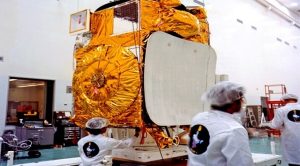ISRO recently shared on Twitter that the satellite has reached the launch station in Sriharikota.

After completing two space missions successfully in July, which included the Chandrayaan 3, the Indian Space Research Organisation (ISRO) is now getting ready for its next major mission. This time, the mission involves sending a special spacecraft to study the Sun.
This upcoming mission, called Aditya L1, will be India’s first journey to the Sun. It’s planned to be launched in early September this year, as confirmed by reliable sources.
The primary aim of the Aditya L1 mission is to collect additional details about the Sun’s outer atmosphere. This includes studying its emissions, the winds it produces, and the intense bursts of energy it lets out, which we call solar flares. Moreover, the mission will continuously capture images of the Sun. Aditya L1 is going to take its position at a space point known as Lagrange point L1. This point is about 1.5 million kilometers distant from Earth. The spacecraft, though seemingly nearby, will be more than 90 million kilometers distant from the Sun. This space is actually helpful because it will let Aditya watch the Sun for a long time without any interruptions.

Source: Google Photos
The space organization shared on a social media site that they’re getting ready to send Aditya-L1, India’s first-ever space telescope for exploring the Sun. The U R Rao Satellite Centre (URSC) in Bengaluru built the satellite, which has now successfully reached SDSC-SHAR in Sriharikota.
Various research institutions are collaborating on this solar mission, each contributing seven specialized tools. Some important places in India where scientists study space and stars are the Physical Research Laboratory in Ahmedabad, the Indian Institute of Astrophysics in Bengaluru, two special places where people study stars and space are the Inter University Centre for Astronomy and Astrophysics in Pune, and the Indian Institute of Science, Education, and Research in Kolkata.

For example, at the beginning of this year in January, the Indian Institute of Astrophysics gave a tool to ISRO called the Visible Line Emission Coronagraph, which helps study outer space. This device will keep an eye on strong solar bursts and how they relate to the magnetic forces behind them. Just this June, the Inter University Centre for Astronomy and Astrophysics finished creating another neat tool named the Solar Ultraviolet Imaging Telescope (SUIT). What SUIT does is take really detailed pictures of the Sun using special colors of light and look at its different layers. This helps us understand how the Sun functions inside. Both VELC and SUIT are special tools made just for studying the Sun.
The mission uses special tools, like the Aditya Solar Wind Particle Experiment (ASPEX), to study how solar wind spreads out. There’s another helpful tool called PAPA, which stands for Plasma Analyser Package for Aditya. It teaches us about the stuff that makes up solar wind. Another gadget, SoLEXS (Solar Low Energy X-ray Spectrometer), watches how the Sun shines in X-rays and what it’s up to. Furthermore, the HEL1OS tool observes the Sun as a star, analyzing X-rays emitted during energetic solar flares. Also, a Magnetometer gauges planetary magnetic field strength and uniqueness.
Understanding the Sun’s weather is crucial; it impacts space weather and influences satellite operations, power grids, and more. This link impacts communication and vital space-related systems, shaping how much we depend on technology.
Anjali Marar is affiliated with the Raman Research Institute in Bengaluru.
